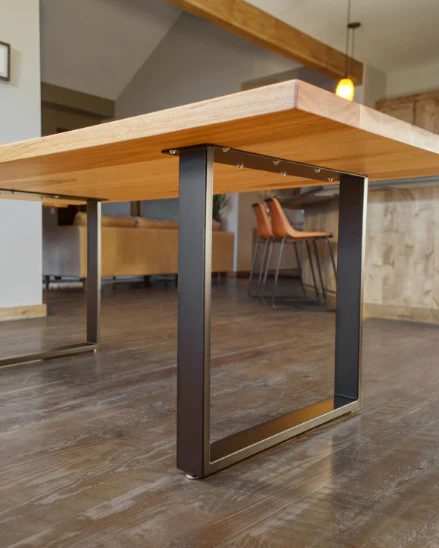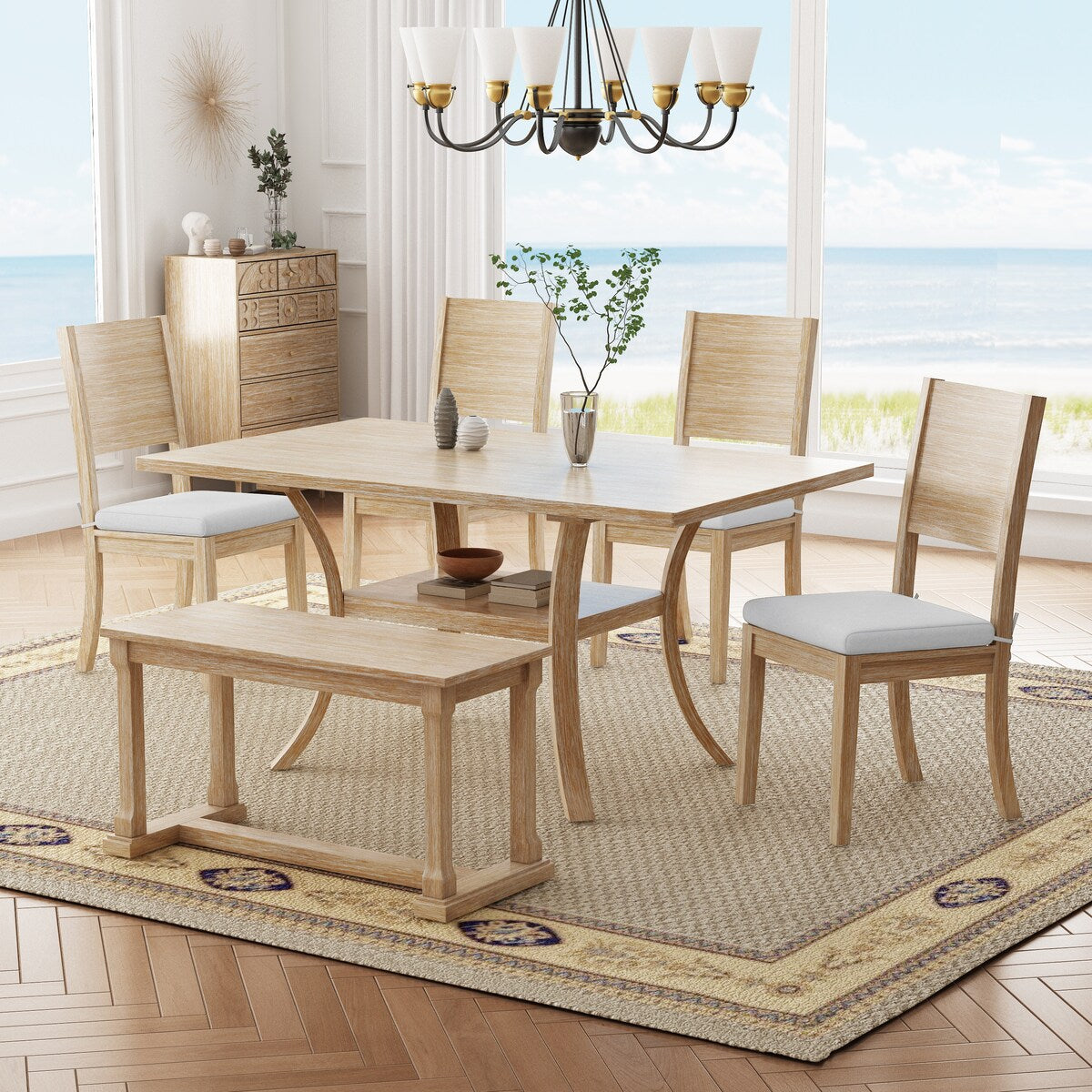The Top Trends in Dining Room Table Legs You Need to Know
The Top Trends in Dining Room Table Legs You Need to Know
Blog Article
From Typical to Modern: Discover the Ideal Eating Space Table Legs for Your Style
The option of dining-room table legs plays a critical role in defining the overall personality of your room, bridging the gap in between standard craftsmanship and modern-day aesthetics. While traditional layouts such as cabriole and turned legs stimulate a sense of timeless elegance, modern styles like barrette and geometric options offer a possibility for striking visual passion. Assessing the appropriate equilibrium between these designs calls for a nuanced understanding of your existing design and personal taste. As you take into consideration these elements, the inquiry continues to be: how can you perfectly incorporate these diverse leg styles to develop an unified eating experience?
Comprehending Table Leg Styles
The range of dining-room table leg designs can significantly influence both the appearances and functionality of the room. Each leg design adds distinct functional functions and visual elements, dealing with diverse layout choices and use demands. Recognizing these designs is crucial for selecting the appropriate eating table that straightens with your general interior decoration vision.
For example, tapered legs offer a tidy, timeless appearance that can enhance a room's sophistication, while stand bases give security and make the most of legroom, making them perfect for smaller spaces. Hairpin legs, a characteristic of mid-century modern-day style, present a commercial panache, enabling for an airy, open feeling. Likewise, trestle legs stimulate rustic beauty, offering robust assistance and a sense of eternity.
Furthermore, the choice of products plays a significant duty. Wood legs can bring heat and appearance, whereas metal alternatives typically convey a streamlined, contemporary ambiance. Eventually, comprehending table leg styles is essential for producing a cohesive eating area that mirrors personal design while making certain functionality and convenience. By thoughtfully taking into consideration these aspects, you can boost both the aesthetic and practical appeal of your eating space.
Conventional Table Leg Options
When picking eating room table legs, traditional choices usually embody timeless sophistication and craftsmanship. These styles reflect an abundant heritage and a dedication to high quality, making them ideal for those who value classic appearances.
One of one of the most legendary traditional leg styles is the cabriole leg, characterized by its stylish curved shape. This design typically includes ornamental carvings and is most frequently discovered in Queen Anne and Chippendale furnishings. One more prominent option is the turned leg, which flaunts a series of smooth, rounded forms that give a classic look while maintaining security.
Furthermore, the straight leg, while easy, provides a unadorned and sturdy framework that can mix perfectly with a range of tabletop styles. For those drawn to ornate describing, claw-and-ball feet legs stimulate a sense of magnificence and can function as a magnificent prime focus in any type of dining area.
Lastly, pedestal bases, although not purely legs, supply an alternative conventional option that enables enough legroom and can be perfectly carved. Each of these conventional leg designs adds to the overall ambiance of an eating space, marrying feature with aesthetic appeal.

Modern Table Leg Designs
Modern table leg designs use a diverse series of designs that emphasize tidy lines and ingenious materials. These layouts usually prioritize capability while acting as striking focal factors within a dining room. Minimalist appearances prevail, with legs crafted from products such as metal, glass, and crafted click here for info wood, which add to a ventilated and contemporary feel.
One preferred design is the barrette leg, defined by its slender, tapered framework that provides stability without frustrating the table top (dining room table legs). This style is commonly found in mid-century contemporary furnishings and can effortlessly enhance different table forms. Another pattern is the usage of geometric shapes, where legs may handle angular or unbalanced types, including aesthetic passion and a touch of virtuosity

Mixing Styles for Special Areas
Commonly, home owners look for to produce special eating rooms that show their personal style by blending different layout aspects. This technique enables for the consolidation of diverse aesthetic appeals, resulting in an unified yet distinct atmosphere. For example, matching a rustic wooden table with smooth, contemporary metal legs can develop an attractive comparison that raises the space's total allure.
In addition, incorporating vintage table legs with contemporary table tops can evoke a sense of background while maintaining a modern-day perceptiveness. Such mixes not only showcase private taste yet also urge creative thinking, permitting property owners to curate a space that feels both individual and inviting.
Shade plays a crucial function in this mixing process; picking table legs that match or contrast with the existing color have a peek at these guys pattern can enhance visual passion. Whitewashed legs can soften the boldness of a dark table surface area, creating a balanced visual.
Tips for Choosing the Right Legs
Picking the right table legs is necessary for accomplishing both capability and aesthetic charm in your eating area. Begin by considering the general design of your space. Standard setups benefit from legs that include elaborate makings or turned styles, while contemporary spaces might ask for streamlined, minimalist designs.
Following, assess the height and stability of the legs. dining room table legs. Typical dining tables range between 28 to 30 inches in height, so make certain the legs complement this dimension for convenience. Additionally, robust materials, such as hardwood or metal, can improve security and long life
Evaluate the leg shape as well-- choices include right, tapered, or pedestal layouts. Straight legs supply a classic look, while conical legs can include a touch of elegance. Pedestal bases provide sufficient legroom and are suitable for smaller sized rooms.
Conclusion
In summary, selecting the ideal eating space table legs requires careful consideration of both contemporary and traditional designs. By balancing leg design, elevation, and material with the general design, a cohesive and welcoming environment can be achieved.
The selection of eating area table leg styles can dramatically affect both the visual appeals and functionality of the space. Ultimately, comprehending table leg styles is crucial for creating a natural eating location that reflects individual style while guaranteeing practicality and comfort.One of the most iconic typical leg styles is the cabriole leg, identified by its graceful rounded shape. Straight legs use a classic look what i found appearance, while tapered legs can include a touch of elegance.In recap, selecting the suitable dining space table legs requires mindful consideration of both contemporary and typical designs.
Report this page